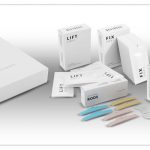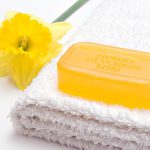Everybody knows that the majority of toothpastes contain fluoride – a well-known ingredient that most of us can’t imagine taking care of the oral cavity without. This remineralizing and enamel strengthening ingredient is commonly incorporated into toothpastes because it provides teeth with cavity protection and helps to prevent gum sensitivity. However, do you know that fluoride causes more harm than good if you use it in big amounts, especially when you are an adult? Keep reading to find out whether you should have fluoride in your bathroom.
What is fluoride?
Fluoride is an element that has a positive effect on our health, provided that used in the standard doses. There are a few important tasks that fluoride is expected to handle. For example, it:
- takes an active part in producing new bone tissue.
- prevents tooth decay and enamel damage.
- increases tooth and gum resistance to acidity in the mouth.
- deals with the dental plaque.
What is this “bad” fluoride?
There are a couple of indications to using fluoride, yet they all are getting in decline as we age. For example, using big amounts of fluoride by adults may lead to serious poisoning, which in extreme cases may lead to internal organs damage. Although this rarely happens, it’s better to be aware of the hazard that is connected with using fluoride in excessive amounts.
What causes the excess of fluoride? Symptoms of overdose
Obviously, too much of anything is bad. Fluoride used excessively can cause many ailments such as dental fluorosis – a common disorder that is characterized by brownish or yellowish stripes that affect the front of the teeth. Also, it’s often connected with enamel erosion that may lead to brittleness. Moreover, dental fluorosis causes abnormal formation of the enamel (amelogenesis imperfecta). In short, this condition is characterized by pearl-and-white lines and discoloration on teeth, enamel is more brittle and the tooth nerves become hyper-sensitive and prone to damage.
Facts and myths about fluoride toxicity
Obviously, fluoride is known for dealing with bacteria and cavity, however, if you take into consideration the above-mentioned bad sides of this element, you may become cautious when it comes to using it in almost all oral care products. Once again, when delivered to our organizm in small amounts, it doesn’t hurt anybody. However, apart from toothpastes and mouthwashes, fluoride can be also found in various food products.
In order to prevent fluoride overdose, its concentration in a toothpaste shouldn’t exceed 1500 ppm (parts per million). The good news is that regular toothpastes have even less fluoride than that. If you want to clean your teeth with a product that contains more than 1500 ppm of fluoride then you must consult a physician since such products are available with a valid prescription only. Unfortunately, using high doses of fluoride can cause gastrointestinal and some neurological disorders.
Fluoride-Free Toothpaste: Solution to all the maladies
More na more frequently dentists recommend using fluoride-free toothpastes. It appears to be a good advice to follow especially when realizing that a well-balanced diet satisfies our daily fluoride intake, yet it’s too easy to overdose it, and the aftermath is disastrous. For that reason, using a fluoride-free toothpaste seems to be a good solution.
Did you know that fluoride negatively influences fillings by reducing their lifespan? When exposed to fluoride, fillings tend to get brittle and darker. For that reason, reaching for safer solutions like fluoride-free and natural toothpastes should be found beneficial. Although such toothpastes are recommended to adults, there are no contraindications to using them also by kids and pregnant women. In short, fluoride-free toothpastes are safe and contain only ingredients of natural origin.
Natural toothpastes are free from any hazardous substances such as preservatives, SLS or parabens. Nowadays, you can even find a toothpaste for those who developed gluten intolerance. Apart from that, toothpaste producers make sure that the flavor range is wide enough to satisfy all their customers. Therefore, the next time you choose some oral care products, try to find a toothpaste that offers you one of the following flavors: coconut, lemon, cinnamon or orange. Each of them has a separate set of benefits so you can match the toothpaste to your current needs.









Leave a Reply